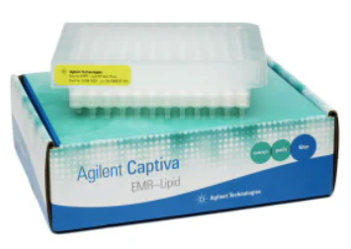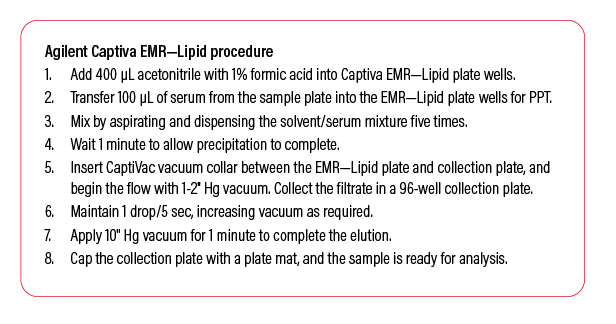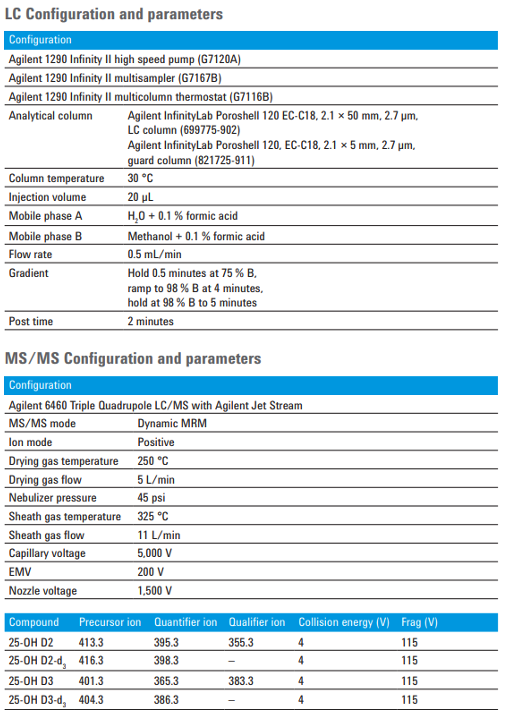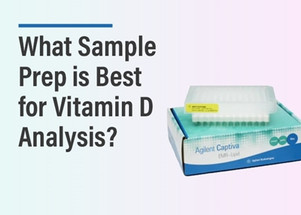10th Jan 2025
What Sample Prep is Best for Vitamin D Analysis?
The increasing demand for more sensitive and specific analytical methods is driven by the need for low-level testing of endogenous vitamins and hormones in biological samples. A key example is the rising popularity of vitamin D analysis. Deficiency in vitamin D can result in health issues like low bone density, while excessive levels can cause harmful calcium buildup in the body. Therefore, accurately monitoring vitamin D levels is essential. Additionally, lipids present in biological samples can interfere with the analysis of 25-hydroxyvitamin D2 and D3 metabolites.
What Sample Prep Method Should I Use?
Traditional sample preparation techniques such as protein precipitation do not remove lipid interferences. Solid phase extraction can be effective, but it requires multiple steps and method development. Agilent’s Captiva EMR-Lipid is a much more rugged and reliable alternative. It is available in a 96-well plate format, which is key for high throughput clinical laboratories. This can also be paired with a Chrom Tech collection plate for streamlined automated analysis. Captiva EMR-Lipid provides highly selective and efficient lipid/matrix removal without the loss of analytes. The novel technology removes lipids based on size exclusion and hydrophobic interaction. The effective lipid removal ensures minimal ion suppression of 25-hydroxyvitamin D2 and D3 metabolites, which significantly improves the LC method reliability and ruggedness.

The 96-well plate (and 1 mL cartridge) formats contain a solvent retention frit, which allows in-well protein precipitation that streamlines sample preparation. The filter design promotes easy flow when paired with vacuum or positive pressure*. Here is the sample preparation methodology used in the study by Agilent Technologies:
*We recommend using a positive pressure manifold over a vacuum manifold. For more information, check out our positive pressure manifold product page.

Chromatography Analysis of 25-hydroxyvitamin D2 and D3 Metabolites
LC/MS/MS has gained wide acceptance for the separation and accurate quantification of vitamin D metabolites. Below you will find the LC and MS/MS parameters utilizing an Agilent Poroshell 120 EC-C18 column and guard column:

For detailed results, click here to review the application note provided by Agilent. Captiva EMR-Lipid proved to be simple to use and provided excellent results for removing phospholipids for vitamin D metabolite analysis.

